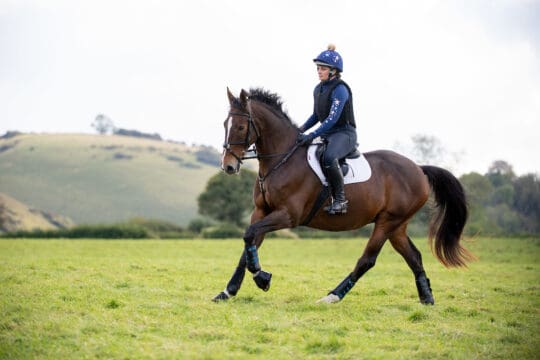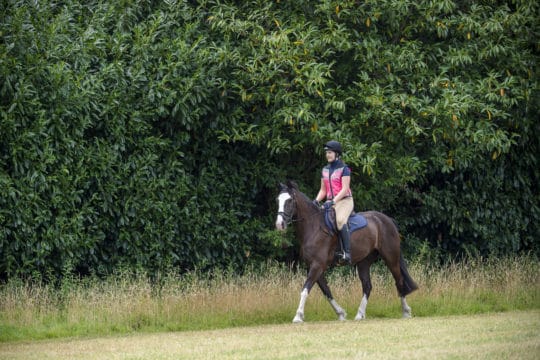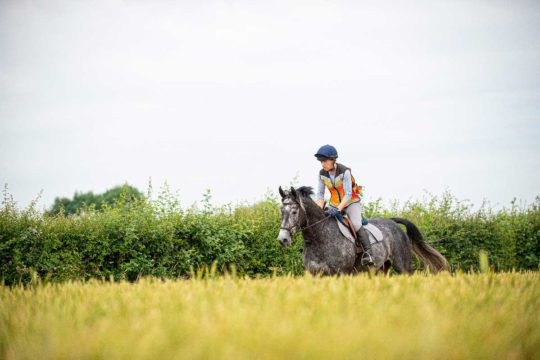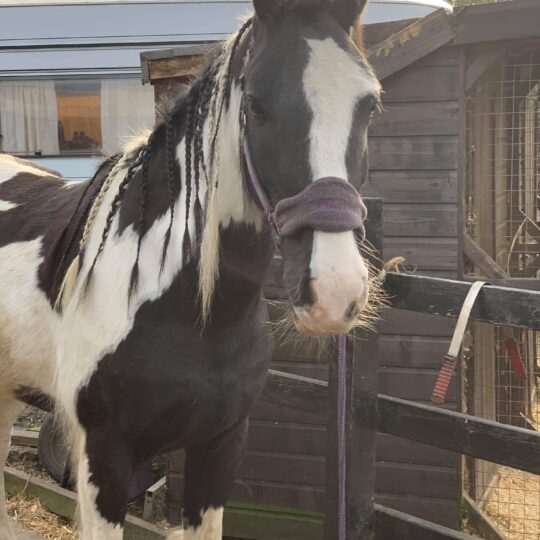Whether you’re stepping up to the next competition level, bringing your horse back into work or just want to ride him for longer, a proper fitness routine is key
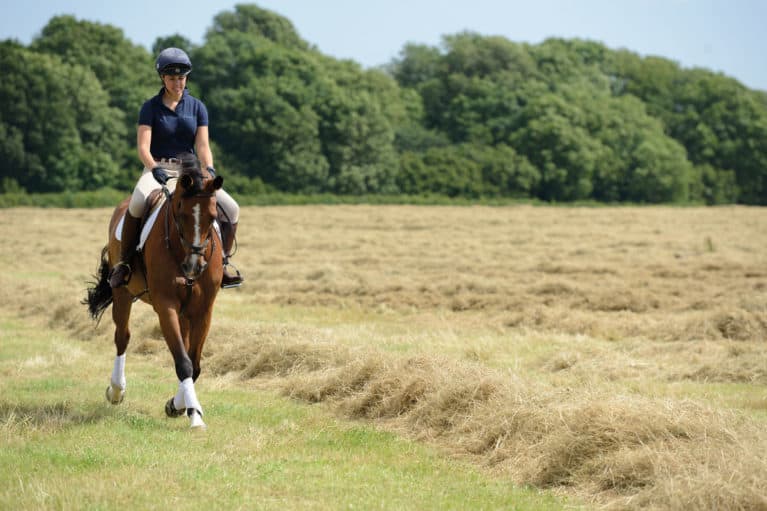
Whether you hack, school or compete your horse, in order to really enjoy your riding, it’s important that he’s fit for the level of work he’s doing. Not only will this keep him going for as long as you want him to, but it also minimises the likelihood that he’ll pick up any injuries along the way.
It’s important to build your horse’s fitness gradually, over a period of weeks or months, to ensure his body has time to adapt as his exercise increases. This may sound like a lot of time and effort but, once you’ve laid the foundations, you’ll soon reap the benefits. Plus, there are a number of ways to keep it varied. Take a look at these fundamentals when formulating your horse’s fitness plans.
TOP TIP – If your horse needs to lose some weight, a brisk walk or steady trot will burn more fat than faster canter work.
Step 1 – hill work
When undertaking a new fitness plan, one of the most invaluable weapons in your arsenal is hill work. Taking your horse up and down hills is far more demanding than completing the same distance on a flat surface, so it’ll help you get him fit much quicker and by adding less miles on the clock.
While uphill work provides crucial cardio, encouraging your horse to breathe deeply and use his whole body, downhill work uses different muscles and improves his strength and balance.
How to do it Start by trotting your horse up hills and walking him down them. Repeat this at least a few times per session. Encourage your horse to reach into the contact to ensure he’s engaging the correct muscles. As he becomes fitter, introduce canter, too. It’s important that you build your pace going downhill as well, but start off with walk and slow trot, as he’ll find it much harder to balance this way.
TOP TIP – If you’re focusing on improving your horse’s strength and muscle tone, add plenty of transitions into your hill work, too.
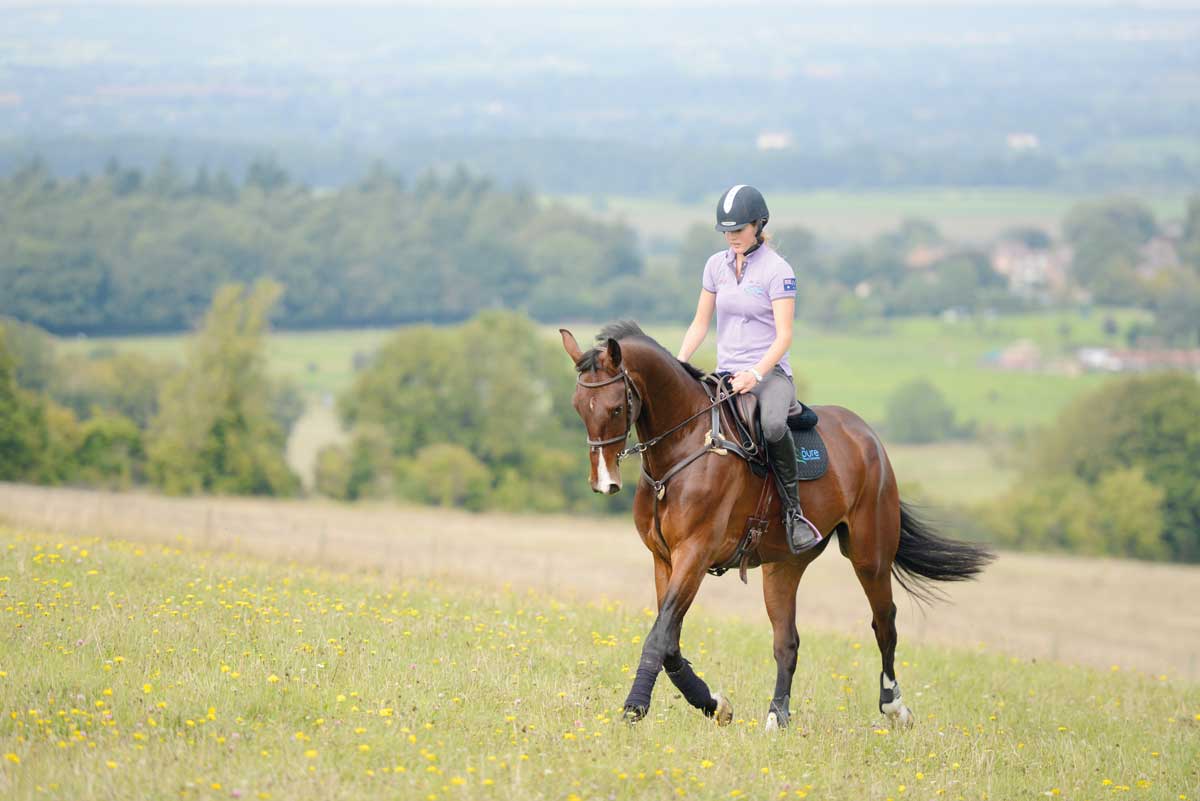
Step 2 – gymnastic exercises
Polework, gridwork and cavaletti are fantastic workouts regardless of your preferred discipline. They’ll encourage your horse to become more agile and athletic, improving his core strength.
How to do it Start off with poles on the ground to trot and canter over, before moving onto raised poles and cavaletti. As your horse gets fitter, you can progress to building small grids, bounces and combinations. You can also alter the distance between the poles to encourage your horse to extend and collect his paces. This will help increase his fitness and build muscle mass.
Incorporating gymnastic work into your lungeing routine will reap similar benefits, and you’ll be able to see how your horse engages from the ground.
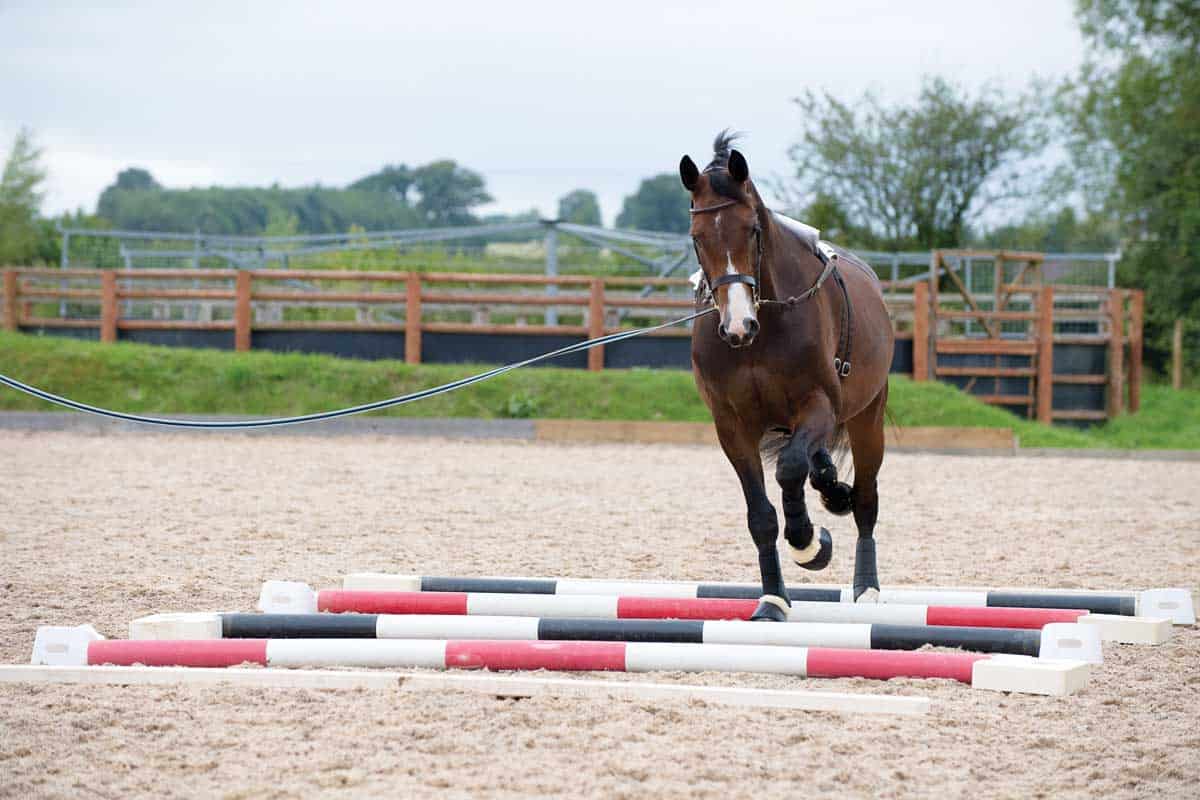
Know your distances
When setting up poles, cavaletti or grids, it’s important to get your distances correct…
- Trot poles: 1.2–1.7m
- Canter poles: 2.7–3.4m
- Bounce striding: 3–3.7m
- One stride distance: 6.4–7.5m
- Two stride distance: 10–11m
Top tip – When setting up poles or jumps on a curve, measure the distance from the centre of each pole.
Step 3 – interval training
Interval training is easy to incorporate into your hacks, and is a great way to gradually boost your horse’s fitness and stamina.
The point of interval training is to keep your horse’s heart rate at 140 beats per minute (bpm) or lower. At this point, his respiratory system is functioning aerobically and he can continue working like this for long periods without getting too tired. When his heart rate reaches 150–160bpm or above, however, his respiratory system starts functioning anaerobically and lactic acid is released into the muscles and he’ll tire. This can’t be sustained for long periods.
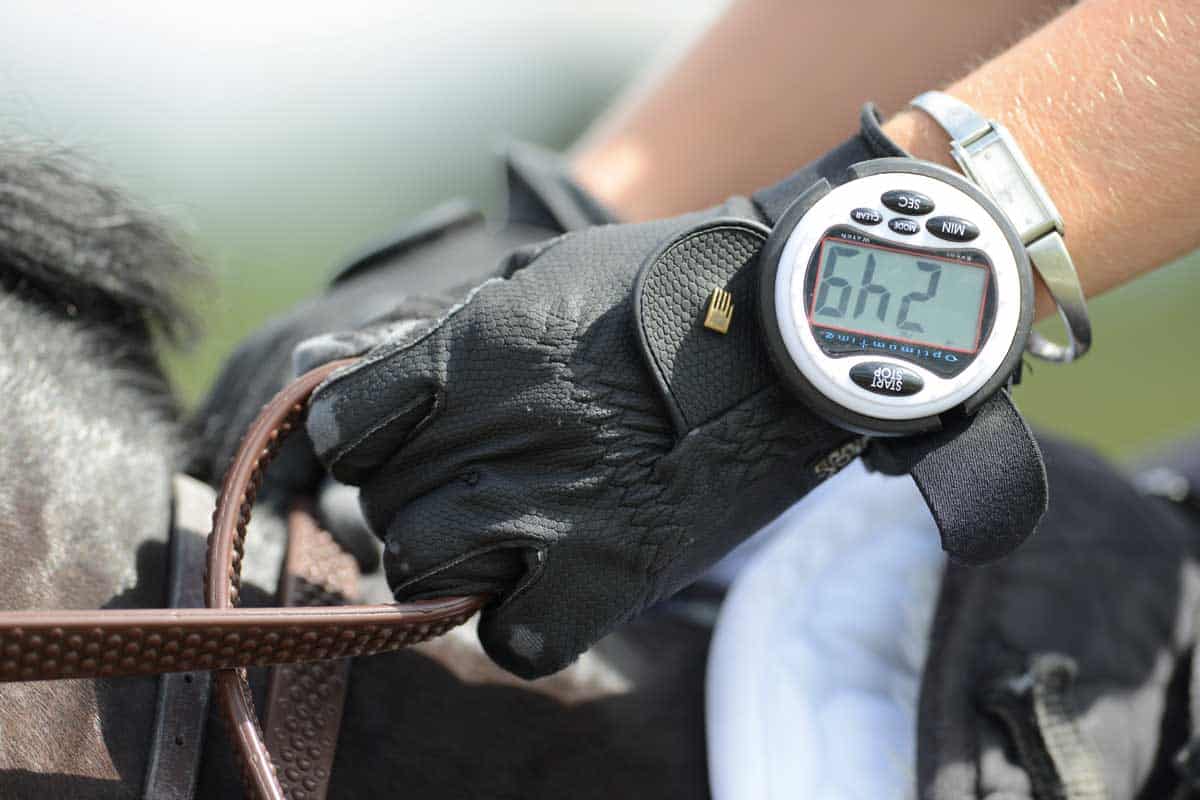
How to do it After you’ve warmed your horse up, follow this example of an interval training technique once or twice a week, increasing your repetitions as your horse gets fitter…
- three minutes in trot and one minute in walk. Repeat 3–5 times
- two minutes in canter and one minute in walk. Repeat 2–4 times
- two minutes in trot, one minute in walk. Then, cool your horse off
After a few weeks of following this interval training routine, you can work up to longer spells of trot or canter, being sure to bring your horse down to walk in between.
Top tip – A digital watch with a built-in stopclock is invaluable if you’re planning to make interval training a regular fixture. It may also be worth investing in an equine heart monitor.
Step 4 – gallops
It’s hard to find your horse’s fifth gear if you don’t have somewhere to really stretch him out, so hiring your local gallops can provide the perfect setting for fast work. If there’s a gradual incline, this will really get him blowing, and you can incorporate interval training, too.
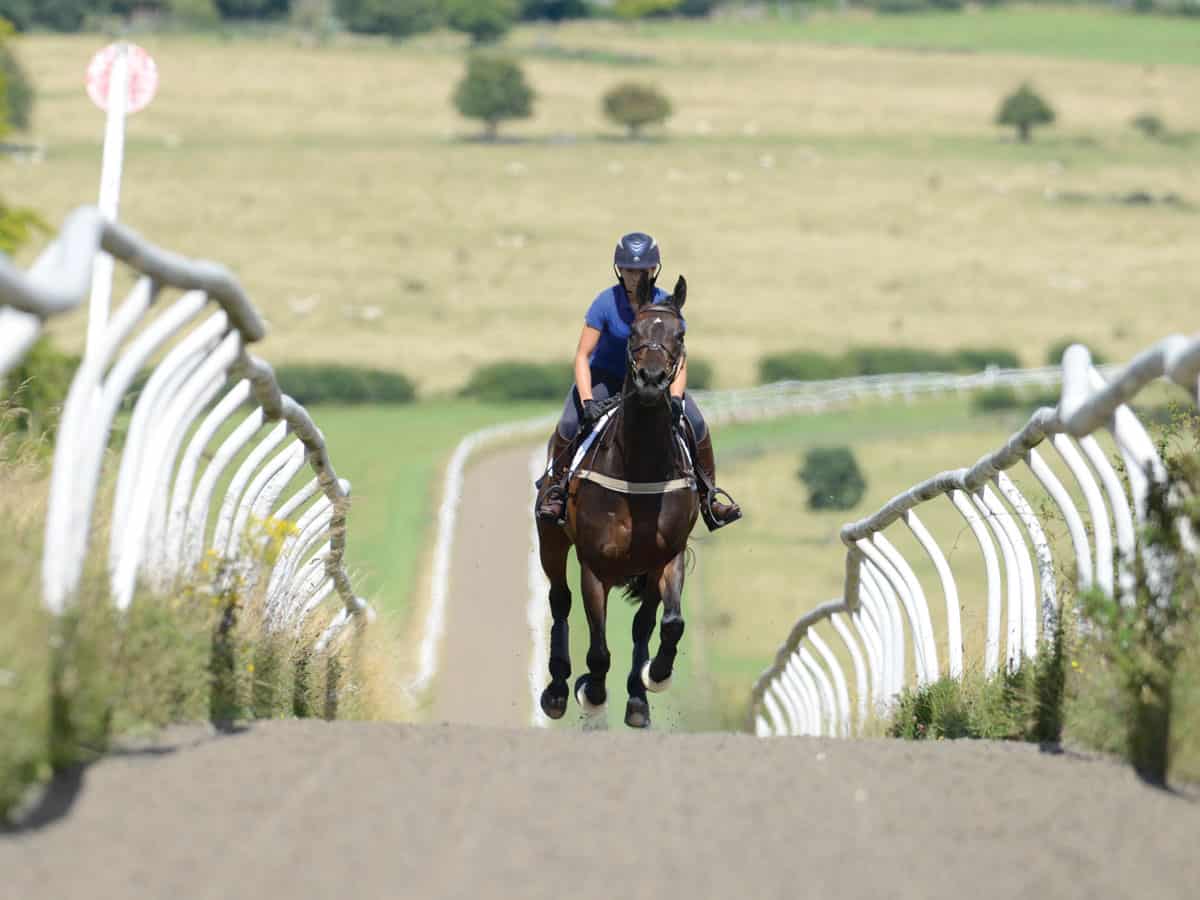
Top tip – If your horse is struggling to find his fifth gear, get a lead from a friend with a horse who’s a little more turbo-charged
Unlike the tracks on your local hacking route, gallops provide a designated workspace and a horse-friendly surface, so you won’t need to worry about concussion from the ground.
How to do it Often venues will have a warm-up track to use for loosening up your horse’s muscles, so you’ll be able to warm up in trot before stepping it up a gear. Call the venue beforehand to find out the quietest time to visit if you’d rather ride at a more leisurely pace, and try to avoid peak times such as weekends and evenings. Uphill climbs on gallops can be quite an intense workout for your horse so only book a trip to the gallops when you know he’s on good form and towards the end of his fitness programme.
Top tip – If your horse isn’t carrying you forward or you’re having to kick on a lot during fast work, you may have asked too much and should review his fitness.
Step 5 – water treadmill
Providing your horse with a low-intensity workout, a water treadmill puts less strain on your horse’s joints and tendons than if you were simply working him out in the open.
The saltwater is also renowned for its natural healing effect on wounds, and can be used to help conditions such as tendon or soft tissue injuries, pulled suspensory ligaments and generally for rehabilitation.
How to do it Locate your nearest equestrian therapy centre that hires out its water treadmill. Ask your vet for recommendations, but a physiotherapy-led or referral centre would be best.
Keep sessions short but sweet – just 20 minutes will provide him with an intense workout. Even if you’re only able to take him for a few sessions a month, you’ll soon see the benefits.
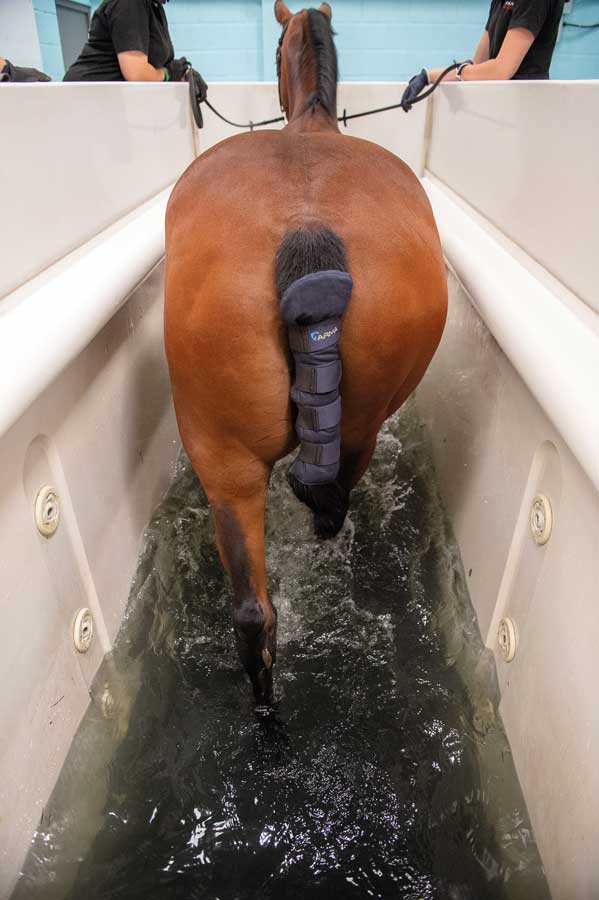
Feeding focus
The food your horse eats will also affect his fitness. A big mistake people make is confusing fat for muscle – you can’t increase your horse’s topline through feeding alone because you need to build up his muscles. If you simply increase his feed but not his exercise, he might look like he’s improving but he won’t have the strength or fitness that comes with a proper routine.
That said, condition comes from the inside, so ensuring that your horse has a well-balanced diet to suit his workload is important. Consult a nutritionist for advice.
Things to consider
There are a number of factors to consider that will impact your horse’s fitness levels…
- Age Horses in their prime will hold their fitness better than older and very young horses.
- Previous fitness If your horse is used to having time off before being brought back into work, you’ll find it easier and quicker to get him fitter than a horse who’s getting fit for the first time.
- Previous injuries If your horse is coming back into work after time off with an injury, he’ll need to spend more time carrying out slower work to ensure pressure isn’t being applied to his previous injury.
It may feel difficult to boost your horse’s fitness levels when you’re squeezing it in around work but, with so many ways to keep it fun and varied, you’ll find yourself bursting to get out. By working smartly, your horse will be striding on for longer in no time.
Are you looking to improve your fitness alongside your horse’s? Check out these exercises to maximise your strength and condition in as little as 30 minutes here.




